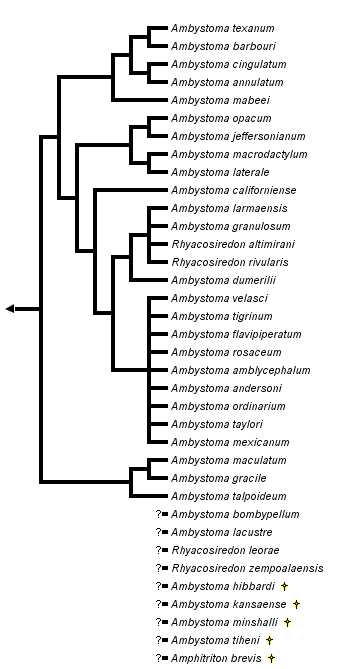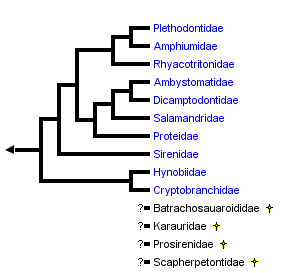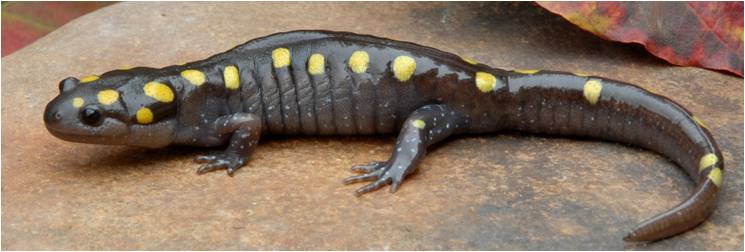Classification
Domain: Eukarya- Organisms whose cells contain a true nucleus
and membrane bound organelles.
Kingdom: Animalia- Animals are eukaryotic and are
multicellular, most being heterotrophic.
Phylum: Chordata- Animals which are vertebrates. They, for at
least some period of their life cycle, have a notochord, a
dorsal nerve cord, pharyngeal slits, an endostyle, and a
post-anal tail.
Class: Amphibia- Cold-blooded animals that metamorphose from a
juvenile water-breathing form, either to an adult air-breathing
form, or to a paedomorph that retains some juvenile
characteristics.
Order: Caudata- Salamanders, typically characterized by their
slender bodies, short noses, and long tails.
Family: Ambystomatidae- Mole salamanders are identified by
having wide, protruding eyes,
prominent costal grooves, thick arms, and rounded tails. Most
have vivid patterning on dark backgrounds, with marks ranging
from deep blue spots to large yellow bars depending on the
species.
Genus: Ambystoma- meaning anabystoma - to cram into the mouth.
Possibly derived from Amblystoma: Greek - blunt mouth.
Species: maculatum- meaning “speckled”.
Ambystomatidae- Mole Salamanders

 Caudata-
Salamanders
Caudata-
Salamanders
Amphibia

Phylogenetic relationships of salamanders based on combined molecular and morphological data.
Information taken from tolweb.orb
On to Habitat
Go Back to Home
